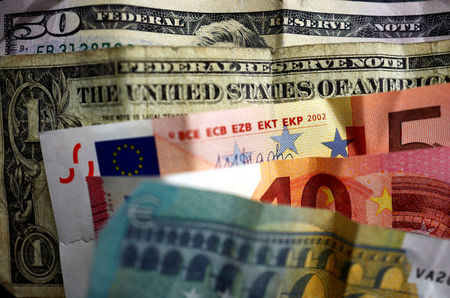
Investing.cm — Citi Research has simulated the effects of a hypothetical oil price surge to $120 per barrel, a scenario reflecting potential geopolitical tensions, particularly in the Middle East.
As per Citi, such a price hike would result in a major but temporary economic disruption, with global output losses peaking at around 0.4% relative to the baseline forecast.
While the impact diminishes over time as oil prices gradually normalize, the economic ripples are uneven across regions, flagging varying levels of resilience and policy responses.
The simulated price increase triggers a contraction in global economic output, primarily driven by higher energy costs reducing disposable incomes and corporate profit margins.
The global output loss, though substantial at the onset, is projected to stabilize between 0.3% and 0.4% before fading as oil prices return to baseline forecasts.
The United States shows a more muted immediate output loss compared to the Euro Area or China.
This disparity is partly attributed to the U.S.’s status as a leading oil producer, which cushions the domestic economy through wealth effects, such as stock market boosts from energy sector gains.
However, the U.S. advantage is short-lived; tighter monetary policies to counteract inflation lead to delayed negative impacts on output.
Headline inflation globally is expected to spike by approximately two percentage points, with the U.S. experiencing a slightly more pronounced increase.
The relatively lower taxation of energy products in the U.S. amplifies the pass-through of oil price shocks to consumers compared to Europe, where higher energy taxes buffer the direct impact.
Central bank responses diverge across regions. In the U.S., where inflation impacts are more acute, the Federal Reserve’s reaction function—based on the Taylor rule—leads to an initial tightening of monetary policy. This contrasts with more subdued policy changes in the Euro Area and China, where central banks are less aggressive in responding to the transient inflation spike.
Citi’s analysts frame this scenario within the context of ongoing geopolitical volatility, particularly in the Middle East. The model assumes a supply disruption of 2-3 million barrels per day over several months, underscoring the precariousness of energy markets to geopolitical shocks.
The report flags several broader implications. For policymakers, the challenge lies in balancing short-term inflation control with the need to cushion economic output.
For businesses and consumers, a price hike of this magnitude underscores the importance of energy cost management and diversification strategies.
Finally, the analysts cautions that the simulation’s results may understate risks if structural changes, such as the U.S.’s evolving role as an energy exporter, are not fully captured in the model.
While the simulation reflects a temporary shock, its findings reinforce the need for resilience in energy policies and monetary frameworks. Whether or not such a scenario materializes, Citi’s analysis provides a window into the complex interplay of economics, energy, and geopolitics in shaping global economic outcomes.
This post is originally published on INVESTING.


